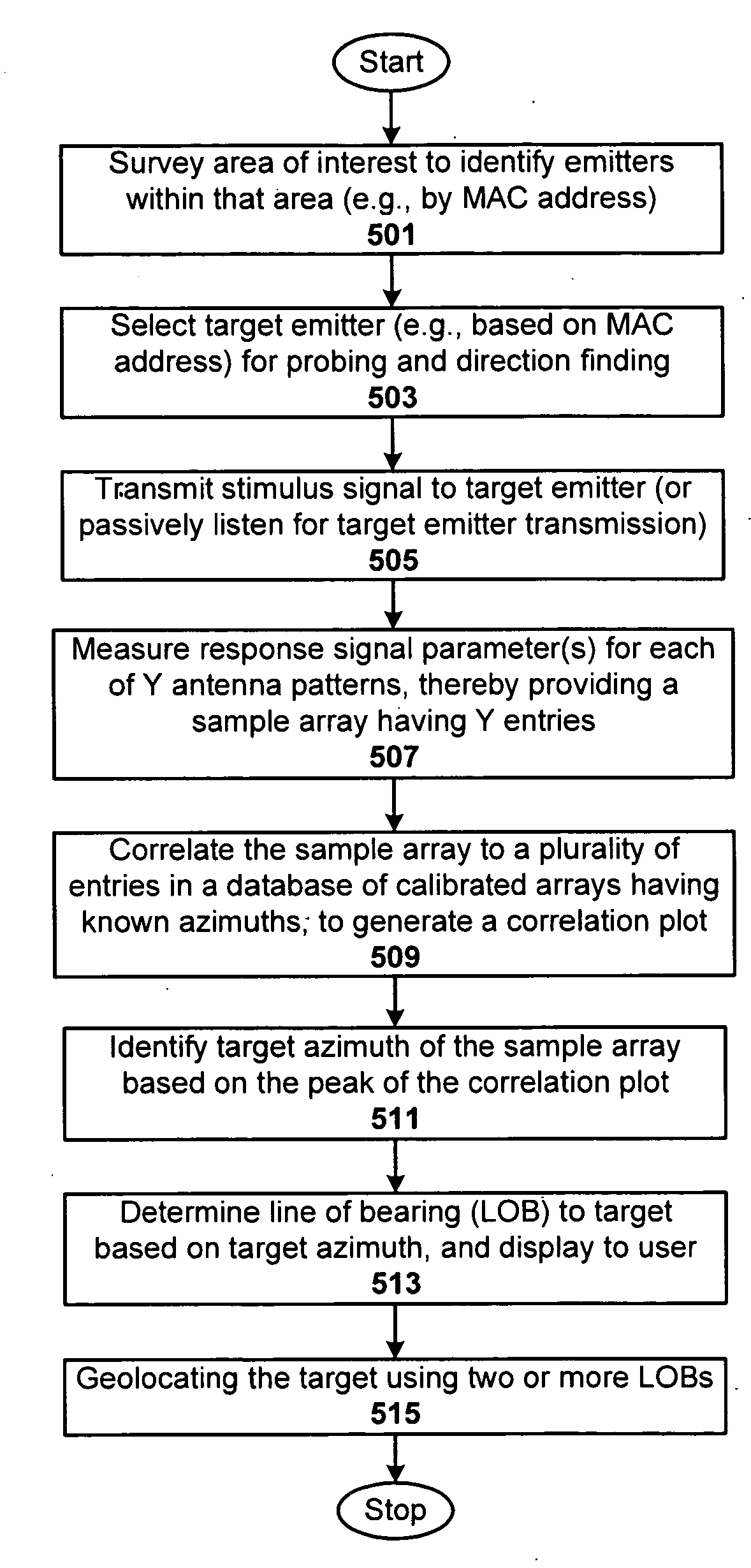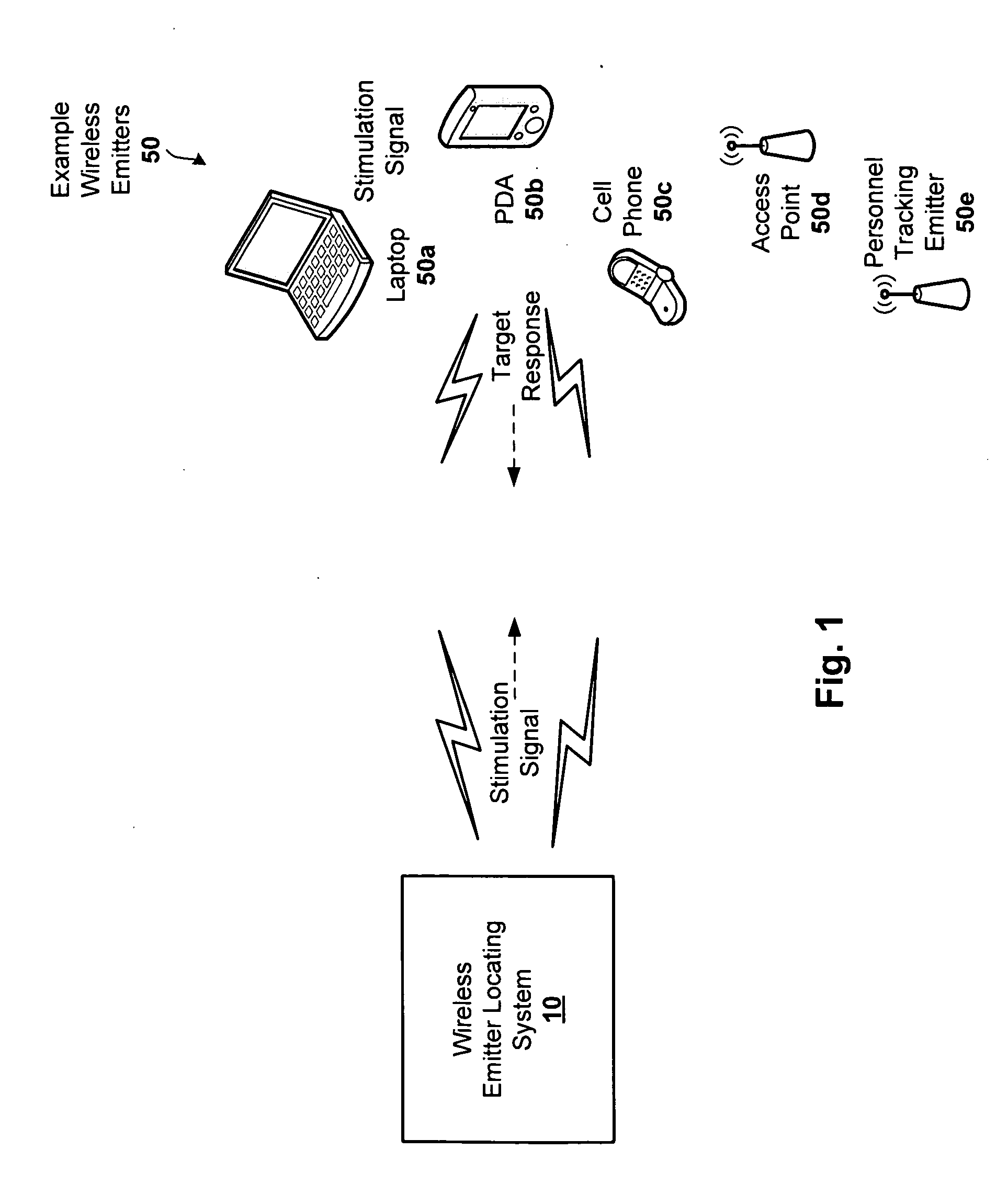Tracking of emergency personnel
a technology for emergency personnel and tracking, applied in direction finders, direction finders using radio waves, instruments, etc., can solve the problems of multiple false readings on increased amplitude (false directions), and many false high amplitude paths to the targ
- Summary
- Abstract
- Description
- Claims
- Application Information
AI Technical Summary
Benefits of technology
Problems solved by technology
Method used
Image
Examples
Embodiment Construction
[0019]Techniques are disclosed that allow for the detection, identification, direction finding, and geolocation of emergency personnel in a given multipath environment. For example, the techniques can be used to detect and identify multiple lines of bearing (LOBs) to an IEEE 802.11 emitter attached to or otherwise possessed by the emergency responder that is inside a building or otherwise contained area not easily viewable from the outside. The LOBs from multiple vantage points can be used to geolocate and / or otherwise track the emergency responder. For instance, by integrating two or more of direction finding devices as described herein via wireless network, and locating those devices on respective emergency response vehicles placed around an incident scene, the individual LOBs can effectively be fused together to calculate a 3D geolocation (the geospacial intersection of 3 or more LOBs) of an IEEE 802.11 emitter carried by an emergency responder inside a building. The resulting ge...
PUM
 Login to View More
Login to View More Abstract
Description
Claims
Application Information
 Login to View More
Login to View More - R&D
- Intellectual Property
- Life Sciences
- Materials
- Tech Scout
- Unparalleled Data Quality
- Higher Quality Content
- 60% Fewer Hallucinations
Browse by: Latest US Patents, China's latest patents, Technical Efficacy Thesaurus, Application Domain, Technology Topic, Popular Technical Reports.
© 2025 PatSnap. All rights reserved.Legal|Privacy policy|Modern Slavery Act Transparency Statement|Sitemap|About US| Contact US: help@patsnap.com



